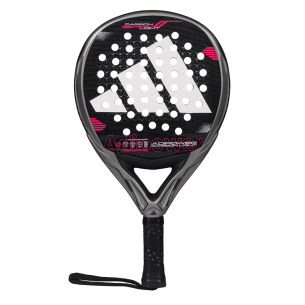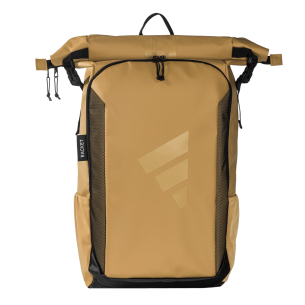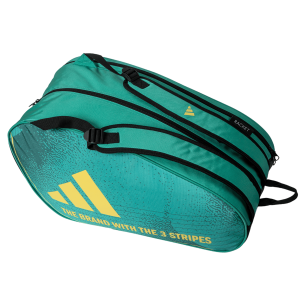
Which side of the court should I play on? With adidas coach, Alberto Pulido
Padel is a sport in which as we grow on the court, we question what’s next and how to improve. As we start returning the ball with ease, over time we want to know how to improve every aspect of our game. One of the questions that comes up is which side of the court we should play on. Which is better for us? What is the set up for our style of play? What is the role we should have depending on which side we play?
To answer all these unknowns, we have spoken to an expert, our adidas coach Alberto Pulido. The first thing he tells us is that padel, like everything else, has evolved. Previously, those who played on the left side of the court had a very different role to those on the right. But over the years, this has faded. Now "we can see that there isn’t such a marked difference between players on each side of the court", he points out.
That said, it is true that "some characteristics are still suited" to play on one side or the other. In this post, we’ll explain what you should take into account depending on the side of the court you choose and some of the keys to help you decide which one you’d like to play on.
Play forehand or backhand side

"The type of player who predominates on the forehand or right side is the one who bases their game on being decisive," Pulido notes. They are the "brain", the player who has the control. One of their skills must be “playing with different speeds and angles”. Their specific functions are, therefore, to control the game and read how the rallies and matches are developing.
On the backhand side, the player traditionally plays "a more offensive role," says our monitor. It is very important to keep in mind that we are talking about the player who keeps "his strong hand in the centre of the court". This will also lead them to sometimes occupy "a small percentage on the side of his partner". Their most specific function is finishing, entering at the right moment with the shot that closes out the point.
Once the theory has been seen, the best thing to do is put it into practice. Testing both sides, "we will see that there is one in which we feel more comfortable, we miss fewer balls and we read the game better", says Alberto Pulido. Although there are more or less established profiles for each side of the court, personal feelings are even more important when choosing a side. Even more so taking into account that in padel, "the profiles are becoming more similar" and the players, whatever side they occupy, assume all kinds of functions.
Another aspect to take into account, less scientific, but just as valid, is that of the playing partner. If our companion works better on one of the sides, it may also be a reason to adapt our choice. For this reason, we recommend not being too selective about what side to play on, and to keep working on improving your game on either side of the court.
And what about left-handed players?

As you may have noticed, up until now we have been talking about the assumption in which both players in the pair are right-handed. What happens when one of the players is left-handed? In cases in which a pair has one right-handed and one left-handed player, "it is said that they have an advantage," says Pulido. The difference with other duos is that they can "cover the centre of the court from both sides" with the forehand. That is a point in favour because the centre is one of the key areas of the court - statistically, more shots are played there.
The ideal arrangement when a right-handed and a left-handed pair up is, therefore, with the player who holds the racket with their left in the theoretical drive zone. In this case, it will be a backhand zone for them too. We end with a note that may not be necessary. When two left-handers form a pair, everything works similarly as to when two right-handers play. The only thing that changes is that the forehand position is on the left and the backhand position is on the right.
The next time you get on court, you already know what to take into account to choose whether to play on one side or the other. And in case you find yourself on your least favourite side, you also know what to consider. All thanks to the wisdom of our adidas coach Alberto Pulido. Keep an eye on the All For Padel blog to read more useful articles to improve your performance within the four walls.











